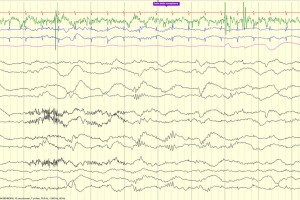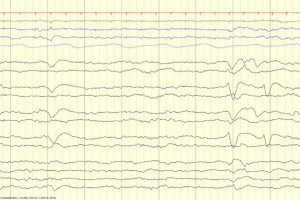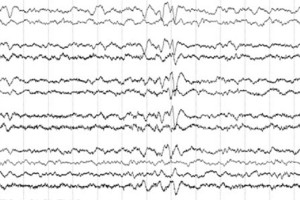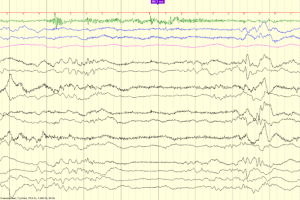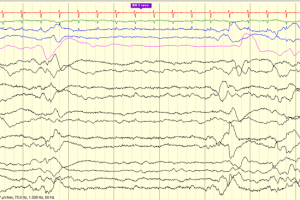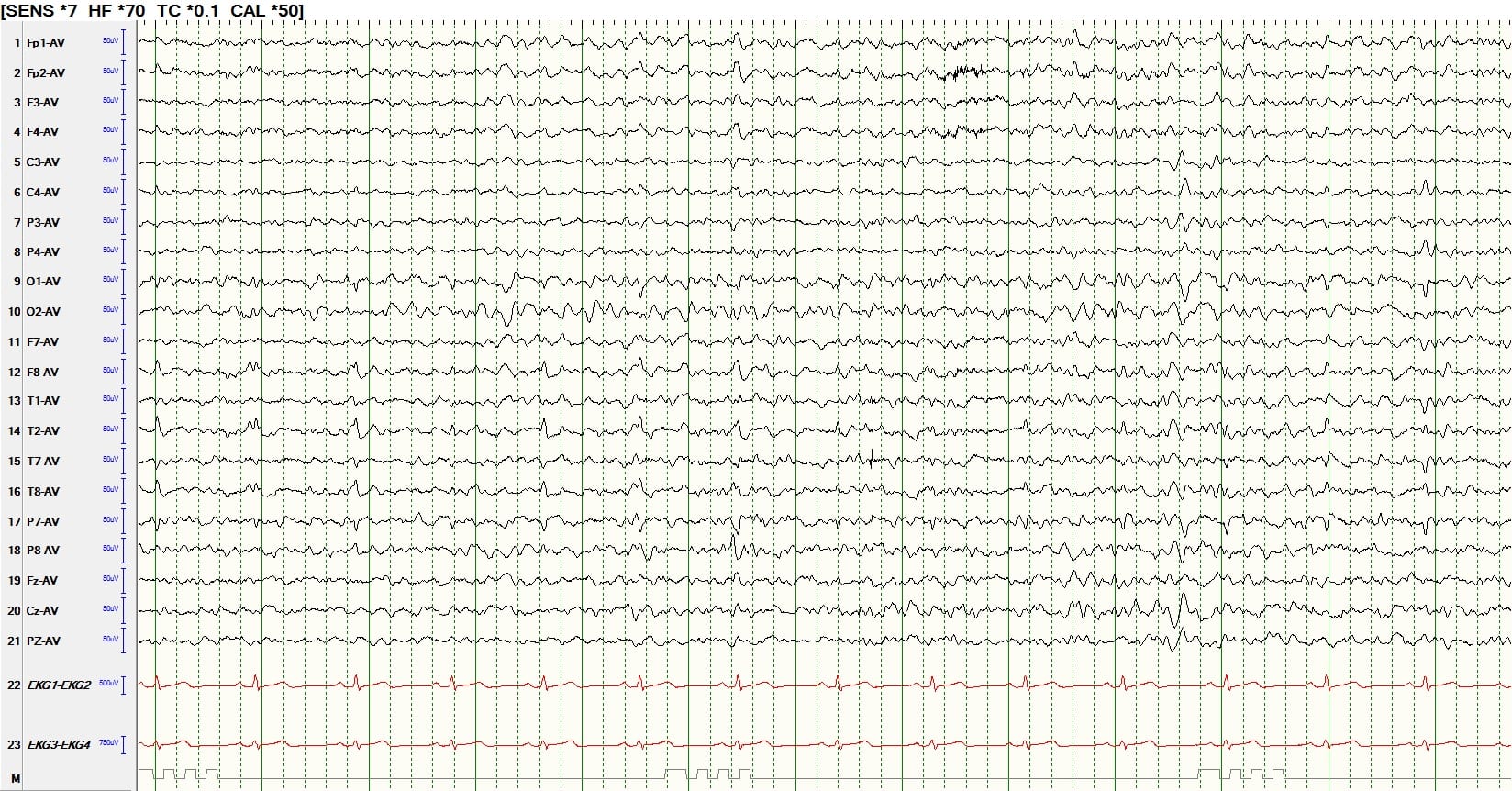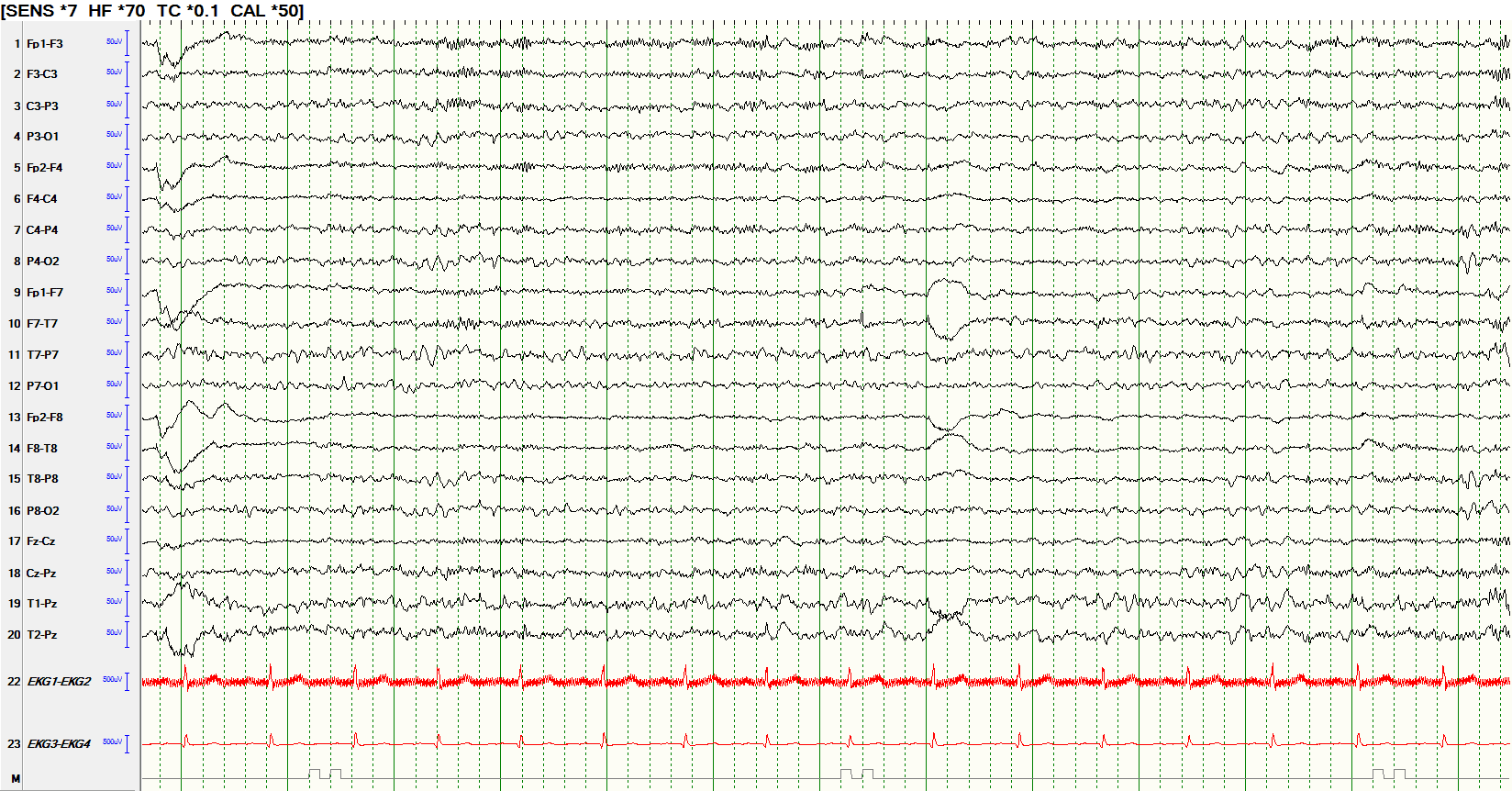EEG is a high yield topic for resident and board exams, so take the time to review this topic carefully! This chapter will teach you to read EEG: from normal findings to epileptiform discharges to associated clinical syndromes. You will also learn commonly tested EEG artifacts. Complete with real EEG tracing examples. Test your skills at the end with a practice quiz! Of note, medical students are not expected to know how to read EEG for exam purposes.
Authors: Brian Hanrahan MD, Steven Gangloff MD
EEG Basics
- EEG measures the potential difference between two electrodes on the scalp.
- The electrical fields that generate EEG signals are the result of inhibitory and excitatory postsynaptic potentials (IPSPs and EPSPs) on the apical dendrites of cortical neurons. (Figure 1).
- The EEG does not measure single action potentials. It measures a summation of postsynaptic potentials.
- The region of the brain with the lowest threshold to electrical stimulation is the hippocampus.
Figure 1: Postsynaptic Potential Summation
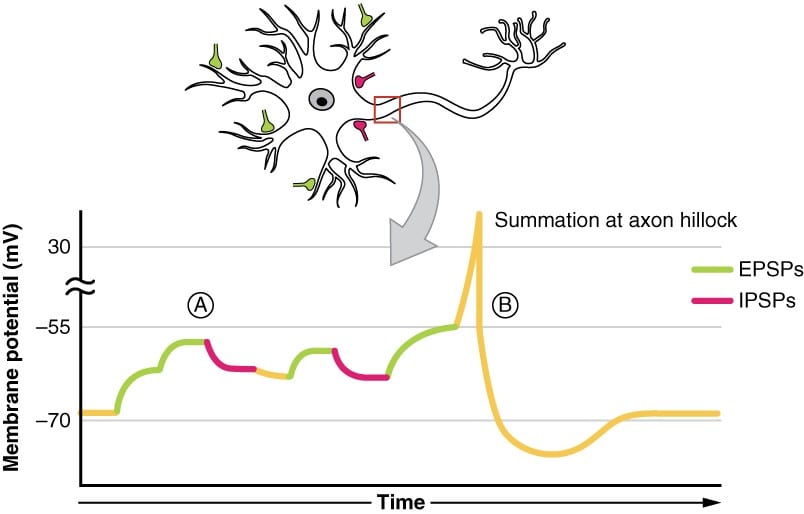
What you need to know
When beginning to read an EEG, first start with these steps: (1) Obtain the age of the patient, (2) identify the state of the patient (awake, drowsy, asleep), and (3) identify what montage you are using (average, referential, bipolar).
EEG Patterns Throughout Development
Preterm EEG
- <32 weeks: Tracé discontinu is seen, which is a discontinuous background pattern that resembles burst suppression. There are bursts of mixed frequency activity lasting <15 seconds followed by long periods of low voltage generalized background suppression.
- There is no difference in the EEG background with state changes.
- >32 weeks: Trace alternant replaces trace discontinu; High-voltage bursts are separated by low-amplitude voltage waves. Other findings include delta brushes, frontal sharp transients, and theta bursts.
Term and pediatric EEG
- Term (40 weeks): Frontal sharp waves can be seen during sleep.
- All pre-term findings resolve by the 42nd-44th week.
- 44 weeks: Sleep spindles form. They can be asynchronous until 2 years of age.
- 46 weeks: Vertex transients can be seen.
- 1 year: Theta frequency posterior dominant rhythm develops.
- 8-10 years old: Alpha rhythms of 9 Hz to 10 Hz become the predominant frequency.
Preterm and pediatric EEG findings
Quick Tip
Remember the Sleep Spindle Rule of 2's: Sleep spindles become synchronous at age two, and occur in Stage 2 sleep.
Background Rhythms
- Delta activity (<4 Hz): When generalized it is Indicative of generalized cerebral dysfunction/encephalopathy produced by processes involving subcortical white matter. If focal, it can represent focal cerebral lesions such as a tumor, cerebral infarction, or cerebral abscess.
- Theta activity (4-8 Hz): Can be seen normally in drowsiness or pathologically in patients with increased intracranial pressures or mild encephalopathy.
- Alpha activity (8-12 Hz): At rest, a quiet awake individual has a posterior (occipital) dominant background alpha activity of 8.5-12 Hz.
- Alpha activity can be suppressed with eye-opening.
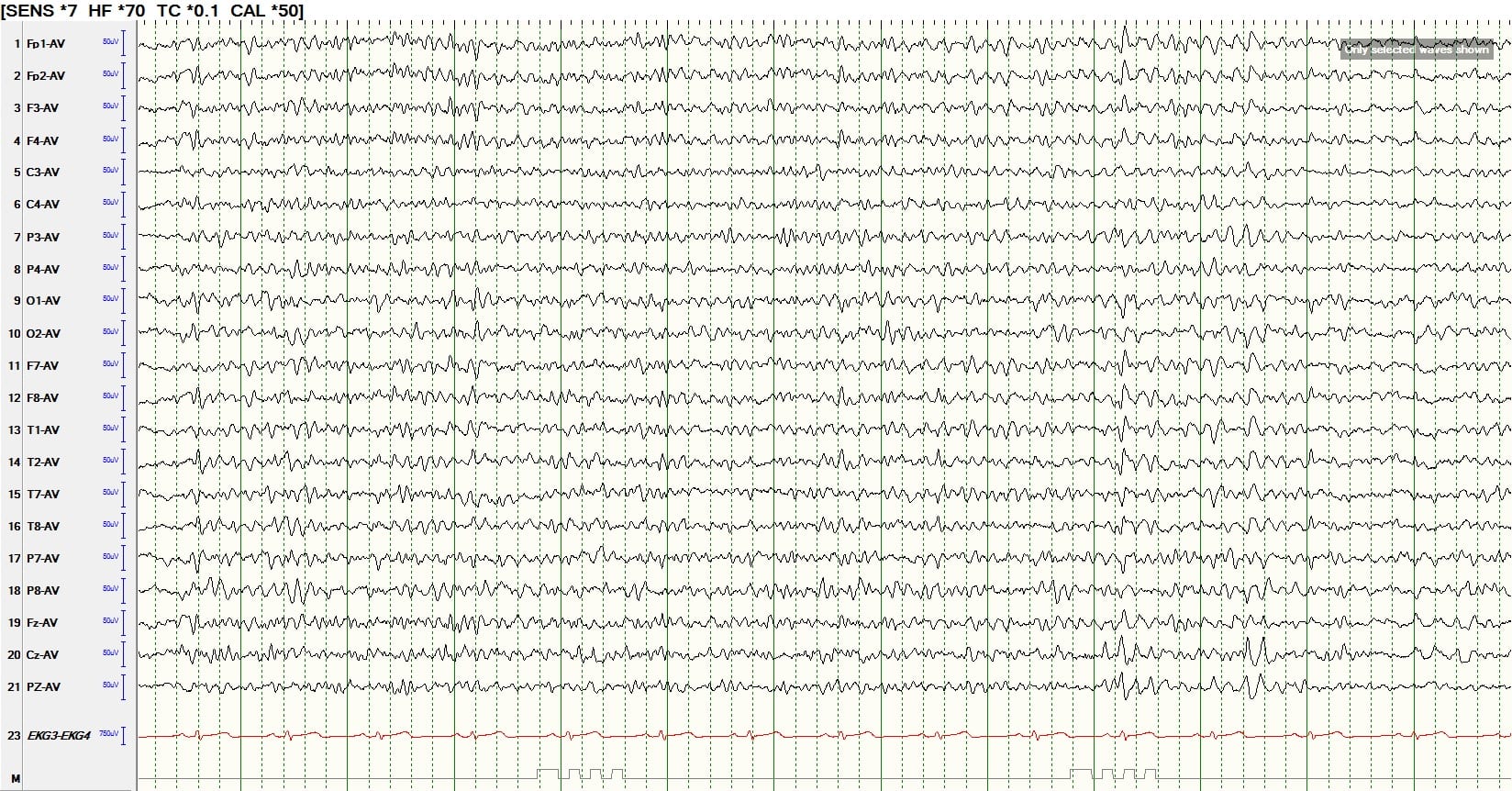
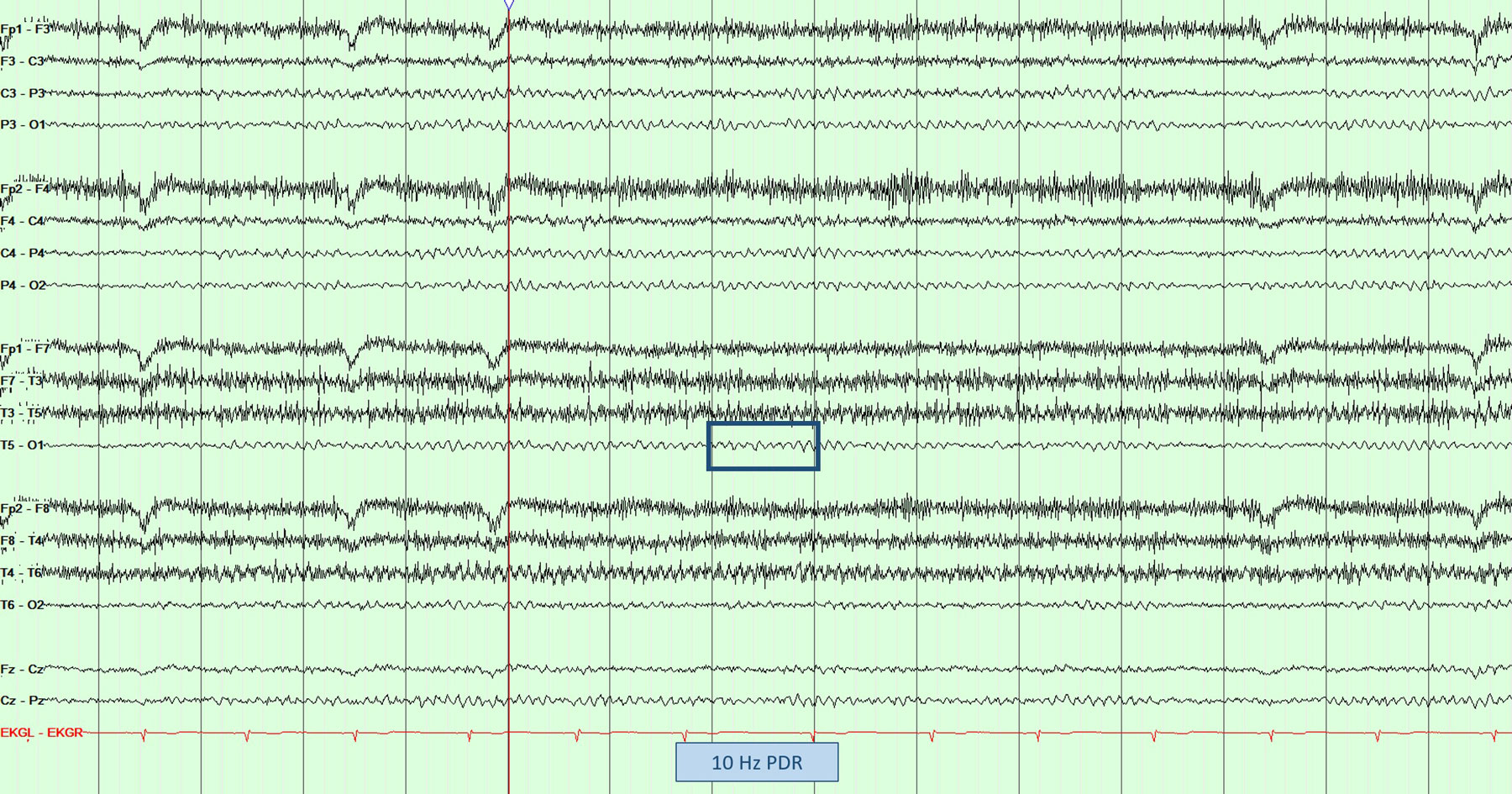
Note:
While a normal PDR for an adult is in the alpha range, not all alpha range activity is normal. The alpha range includes 8 - 8.5 Hz, while a normal adult PDR must be 8.5 Hz or higher. Remember, the normal PDR range varies by age. Use this chart to help:
QUICK TIP
When reading EEGs on test day, first ask yourself, is the patient awake, asleep, or drowsy?
Log in to View the Remaining 60-90% of Page Content!
New here? Get started!
(Or, click here to learn about our institution/group pricing)1 Month Plan
Full Access Subscription
$142.49
$
94
99
1 Month -
Access to full question bank
-
Access to all flashcards
-
Access to all chapters & site content
3 Month Plan
Full Access Subscription
$224.98
$
144
97
3 Months -
Access to full question bank
-
Access to all flashcards
-
Access to all chapters & site content
1 Year Plan
Full Access Subscription
$538.47
$
338
98
1 Year -
Access to full question bank
-
Access to all flashcards
-
Access to all chapters & site content
Popular
Loading table of contents...
Loading table of contents...


